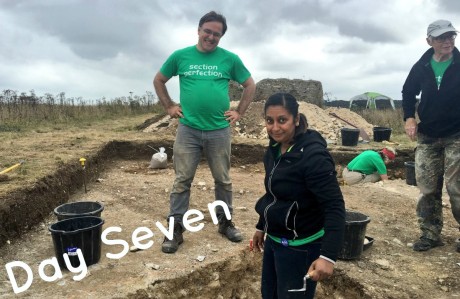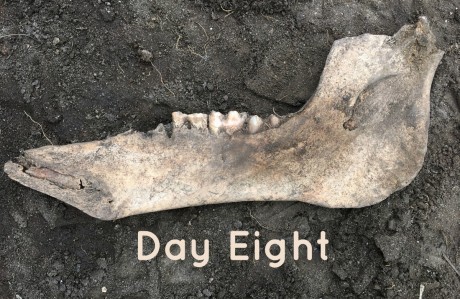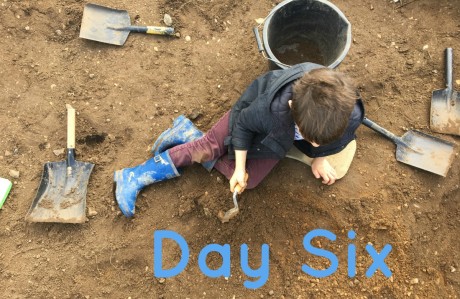
Sunday was truly epic. We’d spent the day carefully removing rubble from the trench, and just when we thought we’d hit the bottom, there it was; the edge of a medieval floor that’s not been seen, or walked on, for over 700 years.
But that’s not the only reason it was epic. Chris has been on nine (yes, NINE) digs with us. Today, Raksha decided he was ready to fill her boots and run a trench for the very first time.
Trench Supervisors might look like they’re just standing around, and pointing at things while you do all the careful work of excavating, but running a trench is no easy task. You have to decide which features to dig, for what reason, and most importantly how. More than that, you have to make sure everyone in your trench understands what you want them to do and why, and be on hand to explain, interpret and help record any archaeology that shows up. And since things can change pretty quickly, you have to be alert to what everyone in your trench is doing, all of the time.
The aim of the day was to dig out the rubble on either side of the corridor. Under Chris’ watchful eye, Raksha, Christine, Hillary and Tayo set about carefully removed the rubble, and kept the sections straight, pulling out small pieces of bone, tile and limestone along the way.
Suddenly, just as we thought we were about to hit the bottom, there was a ringing noise; Christine’s trowel had struck something hard. Grabbing a brush, she swept away the loose and chalky rubble that lay on top. And there it was; the edge of a medieval floor that’s not been seen, or walked on, for over 700 years.
At one end, it looks like a flagstone, with a series of red, yellow and dark stones, all neatly squared and sitting tidily in a line. And as Chris watched carefully as she troweled away around the edges to expose more it was clear that there was a small drop down to a solid mortared surface. Could it be a step?
But the discoveries didn’t stop there. As Chris dropped into the trench to help Christine expose the floor, a hexagonal-looking limestone block emerged from the rubble right next to it. It was starting to look more and more like a doorway.
Then, a few minutes later, we heard a little yell from the other side of the trench – Tayo had uncovered YET ANOTHER piece of floor, this time on the other side of the trench.
With only minutes to go until tools down, it was suddenly starting to look like we had not only a corridor running through the trench, but also evidence of two buildings on either side, including a possible doorway. Our conclusion? Archaeological discoveries are like buses. You wait for one for ages, and then three come along at once.
If the archaeology that showed up on Chris’ watch is anything to go by, then he did a sterling job. And on top of that, he managed to keep Raksha in line! Well done Chris!


